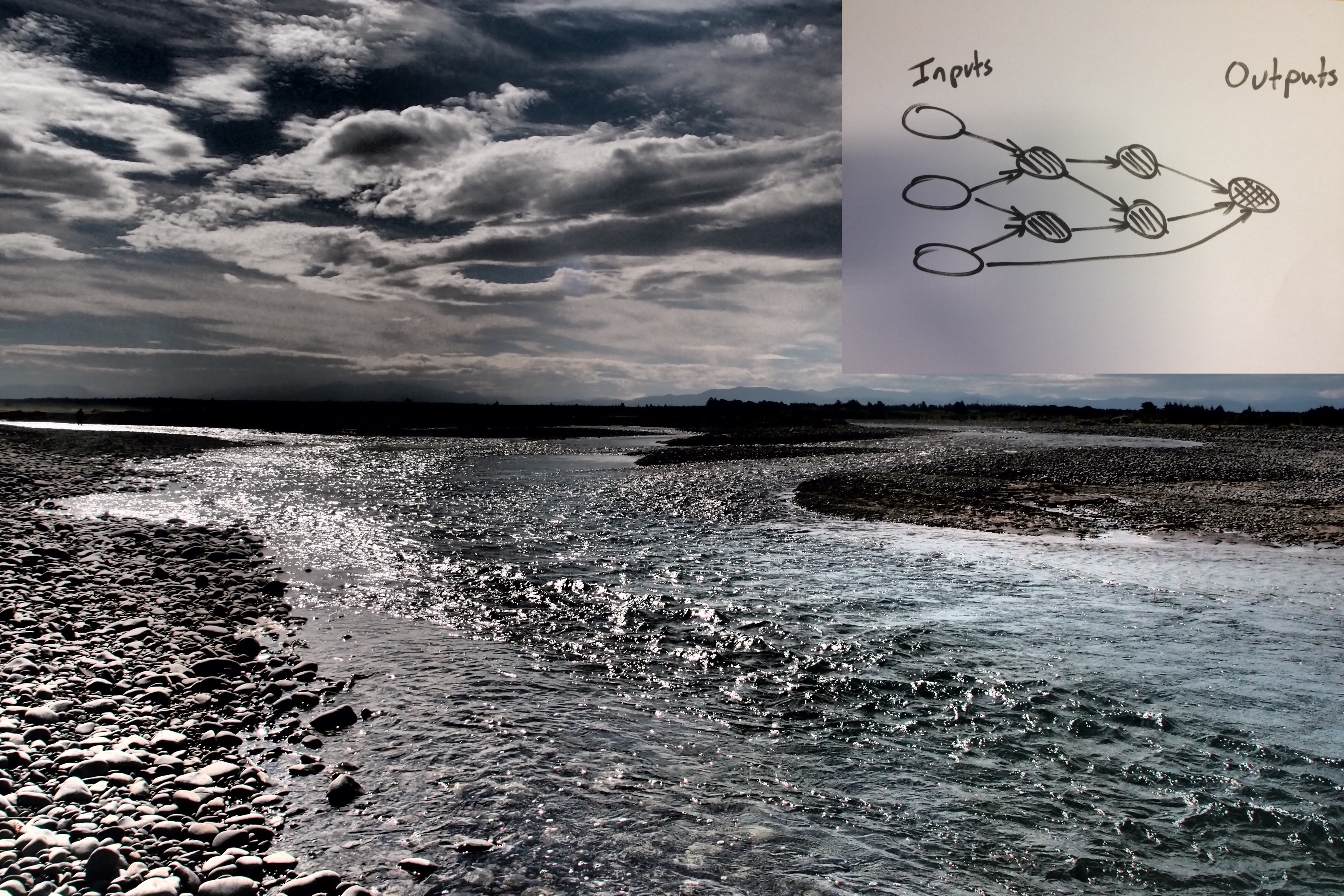Biomimicry inspired engineering software
06 Nov 2016The concept of biomimicry is to emulate nature’s time tested processes/strategies to solve human related problems.
The solutions not only tend to provide a very efficient solution but offer an elegance and intuitive feel due to their natural roots. I first got interested in biomimicry when I heard a TED talk by Janine Benyus who talked about how seashells help us design sewage pipes, amongst other things. I then went on to read her fascinating book on the whole movement of Biomimicry.
When faced with the task of presenting an entire spreadsheet of engineering calculations to the user in an intuitive and efficient way for Pensolve, I knew biomimicry would provide me with the solution.
Design problem
Present the calculations from a spreadsheet (5 to 500+ individual calculations) in a way that allowed the user to quickly understand how the spreadsheet works and be able to find errors.
Solution – part 1 natural flow
Each of the calculations in a spreadsheet are often inputs for other calculations, which are in turn are inputs for even more calculations. Essentially the calculations flow from the input cells through a series of intermediate calculations to the output cells.
We adopted a flowmap to display the flow of calculations, similar to how a braided river flows. Our flowmap goes from inputs on the left to the outputs on the right and allows the user to see how an individual calculation affects the outputs and surrounding calculations.

Solution - part 2: Overlapping lines
Turns out that the optimal display of calculation nodes and their connecting lines is a very very difficult mathematical problem that sometimes does not have a unique solution. To overcome these issues, we again turned to nature to look for solutions. There are many cases in nature where you see branches which are somewhat optimises for space (eg. Trees trying to catch sunlight). However, our branches are splitting and then re-joining and they often have long connecting lines as well as very short ones.
Our solution was to use physics-based rules to distribute our nodes. We gave all of our nodes a magnetic charge so that they would repel each other and provide space. While giving them a gravitational pull towards the centre to make sure they didn’t spread out too much.
We then gave the connecting lines a spring stiffness depending on their length, so that the connected nodes would pull closer together. And we assigned a mass to each node and a viscosity to the page, this allowed the user to click and drag a node and it would naturally pull the connected nodes but with a small amount of drag.
Finally, the nodes were randomly generated on the page and all of the forces would act to bring the nodes to a natural resting place, which resulted in a semi-optimised layout. The added advantage being that the flowmap now has an intuitive/organic feel to it. To achieve this physics based solution above we would like to thank the generous efforts of the contributors to the D3 library.

Solution – part 3: dealing with different spreadsheet versions
One of the other major challenges with engineering spreadsheets is that engineers tend to create multiple versions of a master spreadsheet (e.g. Adding additional calculations for the design of a retaining wall and denoting that spreadsheet to be version two).
While there are probably some magnificent solutions from genetics to work out how the spreadsheet was modified and display it to the user, we turned to our backgrounds in seismic engineering. A common site investigation technique called cross-hole testing requires the matching of an input signal to a recorded signal, which has been modified by travelling through the ground. We converted the calculations in the spreadsheet into a signal and through signal matching could map one spreadsheet onto another, even with considerable modifications. It is not strictly biomimicry, as the solution is more mathematical, however, the signal modification in cross-hole testing is a natural process, so we are still claiming biomimicry here too.

Click here to try out an interactive demo.
Summary
The solution to many design problems both technical and for user experience can be found through nature inspired innovation. We found that our biomimicry solutions offered a far more natural user experience and it also made it easier to build as we could copy the behaviour that we were so familiar with. I would highly recommend reading the book Biomimicry by Janine Belliss, as it is fascinating to hear about the engineering designs that have been developed through the process of biomimicry.
More about Pensolve Three
Pensolve Three is the third version of Pensolve, a software solution to manage and review engineering spreadsheets. Pensolve converts spreadsheets into hand-written calculations for internal and peer-review. It also runs a series of checks on the calculations to assess operational errors. The comparison of spreadsheets and understanding master files are the major new features in Pensolve Three. Pensolve is a part of a new group of productivity applications for engineers that enhance the engineer rather than automate their work.
Check out this two-minute summary video.

